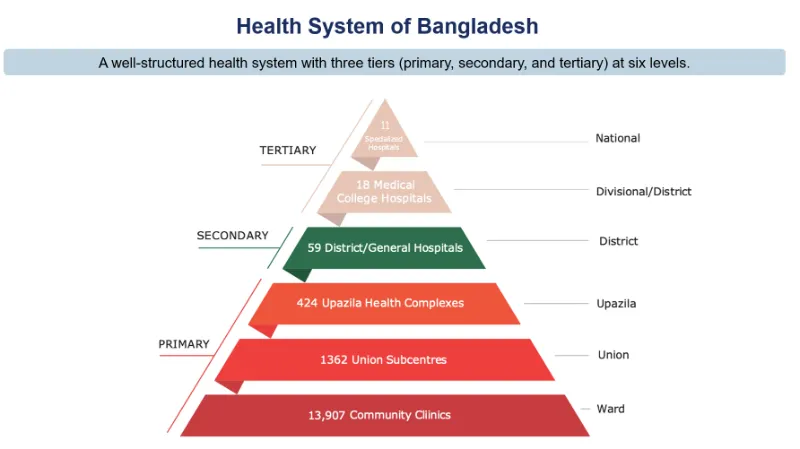Objectives: After completion of the module the trainee will be able to understand:
- The public health importance of NCDs
- Global and country scenario of NCDs
- Risk factors for NCDs
- Prevention of NCDs by using risk factor approach
Methods: Lecture, discussion, brain-storming
Materials: Training module, multimedia
Duration: 2hr
Schedule
Interactive presentation: 50 min
Open discussion: 20 min
Individual feedback on way forward: 50 min
Get the Latest Non-Communicable Diseases Latest Guideline
Non-Communicable Diseases as a Public Health Problem
In 2005, of the 58 million global deaths approximately 35 million resulted from non-communicable diseases (NCDs)/chronic illnesses which are double than that of all infectious diseases, including HIV/AIDS, tuberculosis, malaria, maternal & perinatal conditions, and nutritional deficiencies combined.
NCDs mostly include heart disease, stroke, cancers, diabetes, and chronic respiratory diseases. Although these diseases are the most prevalent and expensive to treat, they are also the most preventable. Vaccines do not prevent them or cured by medication, nor do they disappear. Effective measures exist today to prevent or delay much of the burden and curtail its devastating consequences.
Health-damaging behaviors-in particular tobacco use, lack of physical activity, and unhealthy diet-are significant contributors to this. Promoting healthy behavior choices through education and community policies and practices is essential for reducing the burden of chronic diseases.
In Bangladesh, around 12.5% of all deaths are caused due to various types of cardiovascular diseases. Diabetes is responsible for 6.2% of total deaths. The prevalence rate of diabetes among the rural and urban populations is around 7% and 10% respectively.
Hypertension prevails among 9.8% and 15.6% male and female living in rural settings. A WHO study reported that one in ten persons aged 30 years or older have any of the major NCDs.
In Bangladesh among the urban population around 58% and 16% take more carbohydrates and fat respectively than their required dietary allowances. About 43% of rural and 90% of urban populations lead a sedentary lifestyle. In Bangladesh, as per the Global Adult Tobacco Survey (GATS), current tobacco use (smoking or smokeless) among all adults is 43.3%. The ratio is higher in males (58.0%) than females (28.7%). Tobacco use is more prevalent in rural areas (45.1%) than urban areas (38.1%) and among persons of low socioeconomic status.
Unplanned or poorly planned urbanization provides the breeding ground for killer diseases like NCDs. Globalization is another very prominent partner of urbanization, which is itself not inherently positive or negative. A few armours of globalization such as the internet, email, satellite TVs, radios, Facebook and other channels of socialization immediately bring excellent or adverse impacts on health (or business). Children and adolescents are easily attracted by the advertisements that are misleading, incorrect, and sometimes lead to the adoption of unhealthy practices. The claim of getting super power from junk (or alcoholic) drinks and junk foods are classic examples of deceiving people by the business sector. Palm and palm kernel oils are never cardio-protective in reality but the media.
A few issues of urbanization that are related to NCDs in Bangladesh are listed below:
- Inadequate playground, parks, and footpaths for walking. Paths even if available are occupied by vendors, shopkeepers, construction materials etc.
- Rickshaws are readily available to prevent people from walking for short distances. Use of cycle has almost disappeared in bigger cities. By creating obstacles to walking and cycling and other forms of physical activity, poorly planned urban transport encourages sedentary lifestyles.
- Air pollution due to tobacco smoke, emissions from vehicles, factories, and household stoves are of great concern.
- Junk food (chips, soft drinks, etc.) is becoming increasingly popular among children. Sponsorship of favorite sports events by soft drink companies is mostly visible. The intake of fruits and vegetables is low. Salt intake is high both in the urban and rural areas. Urban food culture in Bangladesh has been nurturing an energy-dense junk food culture of kacchi biryani, kebab, singara, samusa and misty those are full of unhealthy fats. Deep-fried foods are exceedingly common. Repeated use of burnt oil is a high source of trans fat. A recent addition to the above so-called “slow foods” is the western “fast food” in the city life.
- Harmful use of alcohol is more prevalent in urban areas due to its availability in urban environments.
- Psychosocial stress related to the job or otherwise plays a significant role in causing the NCDs
- The good news is that we can do a lot about the prevention of NCDs. Partnership with multiple sectors is needed. It’s not the job of the health sector alone. Civil society organizations, local governments, education, information, and various other sectors’ involvement are necessary. By bringing those together to engage in proper planning actively, developing and implementing stringent policy options with adequate regulatory mechanisms can make a change towards NCD prevention.
Discover more from Shout Me Crunch
Subscribe to get the latest posts sent to your email.








